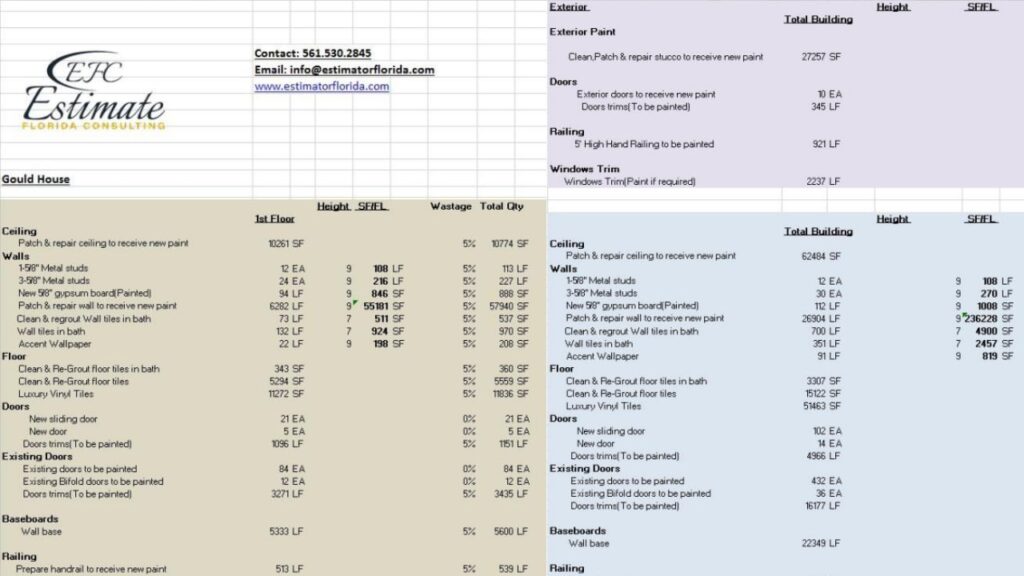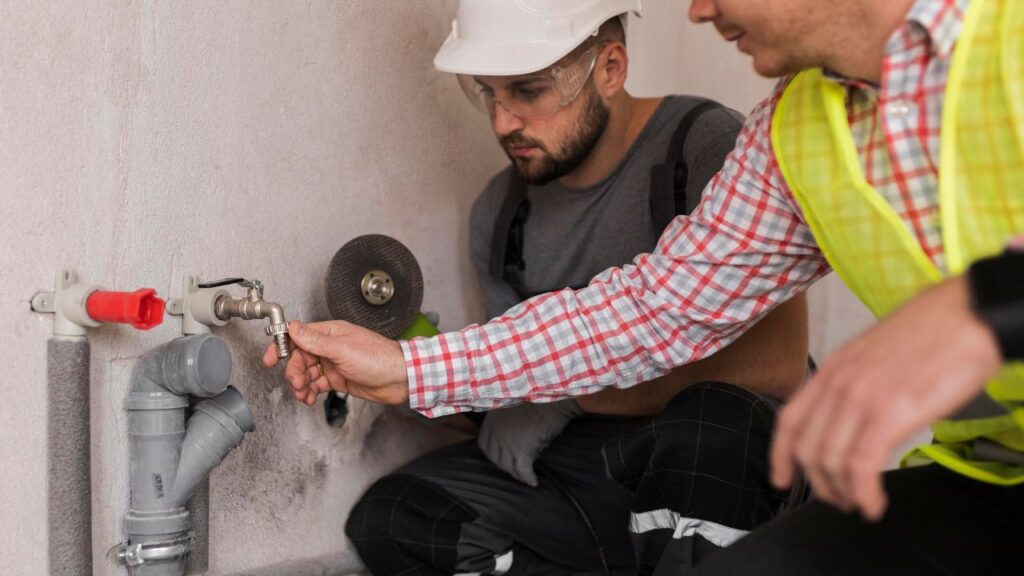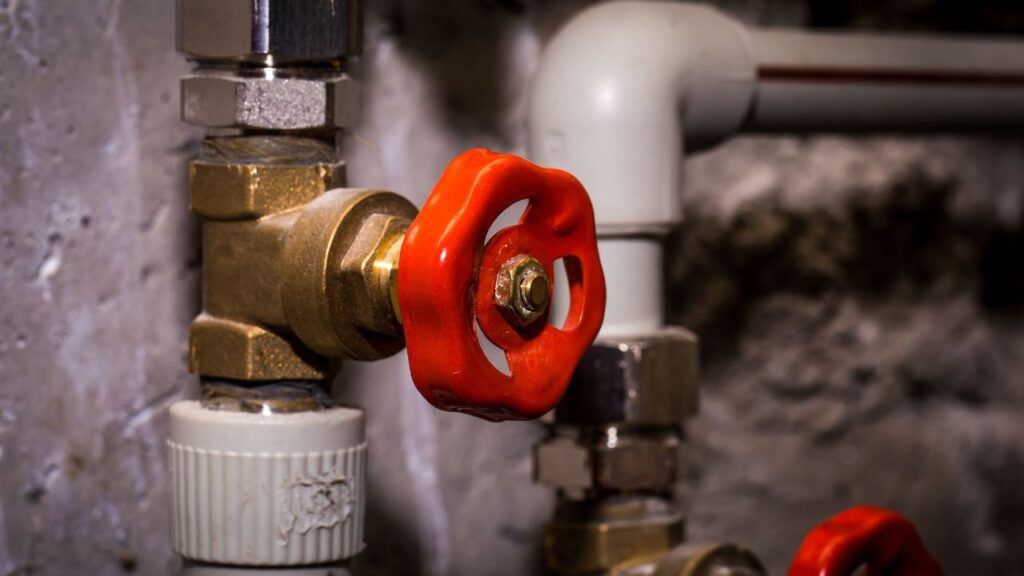A Wining Cost Estimate
That Helps You To Win More Plumbing Construction Projects

Plumbing is a must for new builds. Rough-In Plumbing for New Residential Construction involves knowing the materials, layouts, codes and standards. Also, it requires understanding the space needed for each fixture and plumbing concepts like water supply, waste removal, ventilation.
To estimate Rough-In Plumbing cost, you have to factor in location, number of fixtures and complexity of design. Specialized software calculates material, labor and contingency costs.
Code compliance is essential. Building codes state how many fixtures are allowed per square footage of the home. All pipes must be correctly sized and installed with proper vents to guarantee good airflow.

Over time, plumbing changes have led to updates on design standards and code regulations. It’s important to stay up to date for efficient operation and for adhering to local requirements for new builds.
To estimate the cost of rough-in plumbing for new residential construction with calculating material and labor costs and accounting for additional expenses. By breaking down the various expenses and allocating budget to each, you can get a more accurate estimation of your plumbing costs. Calculating the material and labor costs involved in installing pipes and fittings is the first step. However, additional expenses such as permit fees and unexpected repairs must also be factored in.

It’s essential to calculate both material and labor costs when determining the total expense of rough-in plumbing. Here’s how to do it:
To calculate the cost, you need to look at both materials and labor. Here’s a table showing the materials and their costs:
Category | Materials Required | Cost Per Unit |
|---|---|---|
Pipes | PVC and CPVC pipes | $2-$10 per foot |
Fittings | Elbows, connectors, etc. | $1-$5 per unit |
Valves | Ball valves, gate valves, etc. | $5-$50 per unit |
Other Materials | Nuts, bolts, Teflon tape, etc. | Varies |
Remember, these costs can vary based on location, and building codes may also apply.
Labor costs should also be considered. Skilled plumbers usually charge around $45-$200/hr for rough-in services.
HomeGuide.com found that most homeowners spend between $1,758 to $4,562 on their plumbing rough-ins. Be prepared for extra expenses – they’re like hidden fees on your phone bill!
Maximize your plumbing construction business’s potential with our competitive financing options

When working out the cost of rough-in plumbing, there are extra expenses to take into account. These are not direct costs, but still have a huge influence on the total cost.
You must think of indirect expenses, like permits, labor, and transportation. Permits help plumbers stay within the law, but can also include charges for inspections. Labor and transport also affect the cost, though not directly linked to the project.
It’s also wise to consider problems that could come up during rough-in plumbing, like leaks or design flaws. These unplanned events can add to the overall cost.
An example of this is a remodeling project on a multi-story building with an old plumbing system. During rough-in plumbing, they noticed cracks in the pipes that had to be replaced. This extra expense delayed completion, and made the final cost higher than expected.

In conclusion, plumbing contractors must think of indirect costs and problems that could arise when estimating additional expenses. Doing this gives clients an accurate estimate, and prevents sudden costs during the project.
To estimate the cost of rough-in plumbing for new residential construction with factors affecting the cost, explore the size, complexity, location, accessibility of the site, and the type and quality of materials used. These are the critical sub-sections that impact the overall cost of the plumbing system.
Size and Complexity of the Project
The magnitude and complexity of a plumbing project play a major role in determining its cost. Bigger and more complicated projects lead to higher costs. Let’s look at size and complexity factors that affect plumbing costs.
Size and Complexity of Project
Type of Project | Cost Factor |
|---|---|
New Construction | Low – High |
Remodelling | Moderate – High |
Commercial | High – Very High |
Industrial | Very High |
Luxury Homes | Very High |

Location, materials used and customizations requested by the client also influence plumbing costs. Plumbing is essential in any construction process. It’s important to work with an experienced contractor who understands your needs to keep the project within budget.
Experts have found that rough-in plumbing typically accounts for 15% of construction budget. It’s essential to understand the costs before you begin the project. Don’t expect miracles if your site is in the middle of nowhere.
Location and Accessibility of the Site affects the cost of rough-in plumbing. Table 1 shows how it impacts the Average Cost. Single-story Houses are cheaper than two-story ones due to complexity. Remote Areas need extra transport costs. Tight Spaces limit plumbers’ flexibility. Always plan early for inspection adjustment. Beware of penny-pinching on plumbing materials!
The cost of plumbing installation is based on many factors, like the quality and kind of materials used. The selection of suitable materials can affect the cost.
Here is a table of different materials used in rough-in plumbing with their respective costs.
Type of Material | Quality | Price |
|---|---|---|
PEX Tubing | Premium | $0.50 – $1.50 per linear foot |
PVC Pipes | Premium | $0.40 – $2 per linear foot |
Copper Pipes | High End | $3 – $8 per linear foot |
Fittings | Standard | $0.30 – $5 for each fitting |

PEX tubing is known for its flexibility and short install time. PVC pipes are durable, easy to install, and affordable. Copper pipes are strong and expensive. The fittings are standard for all types.
Selecting quality materials can save money on repairs and replacements in the long run. This will provide a better plumbing system and prevent water leaks.
John was a plumbing contractor who installed a sub-par piping system with below-average fittings. This caused various leaks within months. He had to go back and repair them, costing him and his client more money than if he had used high-quality parts in the first place. DIY plumbing projects are not a good idea unless you want to recreate The Money Pit.
To ensure your rough-in plumbing for new residential construction is done right, hiring a professional plumbing contractor is recommended. In this section, we’ll explore how this solution can benefit you, as well as offer insight into evaluating and comparing quotes from contractors.

Hiring a professional plumber has numerous benefits. They have the training and skills for quality work that meets industry standards. Plus, they can quickly diagnose and fix issues, preventing further damage. They also have the right equipment and know how to handle dangerous risks. Moreover, they understand local building codes, ensuring the work follows regulations. Generally, they offer warranties, giving you peace of mind.
However, not all plumbers are reliable. Do your research before hiring. A friend once hired an unlicensed contractor and caused more damage than they could afford. Confirm licensing and insurance coverage before hiring anyone to repair your place. Comparing plumbing quotes is like playing Russian roulette with your wallet!
It’s important to consider experience and reputation when evaluating contractor quotes. Examine past projects and client feedback to gauge their work quality. Ensure all quoted prices are detailed and that there are no hidden costs.
Quotes should have all the details for comparison. Use a table to make it easier to compare similar aspects. Evaluate details of each quote to get a comprehensive understanding.
Check timeline to select one that suits your schedule. Compare and rate each contractor on areas they excel at. Check if they have experience with your project type.
In the past, comparing quotes was done with tables only. Technology now provides software that updates analyzed data across all tables. Don’t let DIY plumbing cost you more – use these tips to protect your wallet!
To save money on rough-in plumbing costs for your new residential construction project, proper planning and designing, opting for less expensive materials, and DIY and self-learning can be the key. In this section, we’ll explore these sub-sections as solutions to help you estimate the cost of rough-in plumbing and ultimately, save you money in the process.
For the best results, strategic and well-designed plumbing

installations are vital. Adequate planning and design are key for a well-functioning rough-in plumbing system. Home layout, fixture placement, water supply requirements and budget must be taken into account.
Piping materials need to be chosen carefully so they can withstand water pressure without leaking or bursting. Accurate measurements and plumbing codes must be followed too. Here is a table showing how proper planning and design can help save costs:
Planning | Designing |
|---|---|
Home layout | Suitable piping |
Fixture placement | Accurate measurements |
Water supply considerations | Building codes |
For rough-in plumbing installation, PVC piping is cheaper than copper piping. Fixtures installed close together in walls can reduce pipe length and thus decrease material costs.
Choosing Cost-Effective Materials for Rough-In Plumbing?
When it comes to cutting back on expenses, selecting economical materials is a great option. Here are some ideas to keep in mind:
Take precise measurements and plan the rough-in thoroughly before starting the work. This prevents unnecessary purchases and ensures cost-effectiveness.
Also, there are quality, affordable alternatives in the market. For example, PlumbersStock.com provides low-priced materials with high durability.
To summarize, opting for affordable materials is a great way to save money during rough-in plumbing without sacrificing quality or longevity. DIY plumbing is like playing Russian roulette, only with water instead of bullets.

Want to save dough on plumbing? Learn the skills yourself and reap the rewards! You’ll understand your plumbing system better, spot minor problems, and finish small projects without pricey contractor fees. Here’s a 6-step guide to mastering plumbing skills and doing work yourself:
Be sure to invest in quality tools and materials. This will make the work easier and ensure lasting results. Plus, self-learning takes patience. But you’ll save money, time, and be satisfied with the results! So, estimate those rough-in plumbing costs and get ready to do it yourself!
Analyzing factors that impact rough-in plumbing costs in new residential construction requires a comprehensive approach. Important parameters include pipe length & diameter, fittings & valves, location, and labor charges.
To get an accurate cost estimate, it’s vital to collaborate with knowledgeable plumbers who comprehend blueprints & building codes. This helps to avoid any surprises during construction.
Optimizing costs & maintaining quality can be done by using advanced plumbing technologies such as PEX tubing (which needs fewer fittings than traditional systems).
Pro Tip: Visualize the plumbing system using 3D modeling software & identify any potential issues before installation. This allows for preemptive troubleshooting.
Rough-in plumbing refers to the installation of pipes and fittings necessary for a plumbing system to function in a building before the walls, floors, and ceilings are finished.
The factors that affect the cost of rough-in plumbing for new residential construction include the size of the house, the complexity of the plumbing system, the type of materials used, and the labor costs.
To estimate the cost of rough-in plumbing for your new residential construction project, you need to consider the factors mentioned above and get quotes from licensed and experienced plumbers in your area.
Yes, it is necessary to hire a professional plumber for rough-in plumbing in new residential construction because they have the knowledge, skills, and experience to ensure that the plumbing system is installed correctly and in compliance with building codes.
The cost of rough-in plumbing in new residential construction varies depending on the factors mentioned above, but the average cost ranges from $4,000 to $10,000.
When hiring a plumber for rough-in plumbing in new residential construction, you should look for a licensed and insured professional with a good reputation, experience, and references from previous clients.
Here I am going to share some steps to get your plumbing construction cost estimate report.
You can send us your plan on info@estimatorflorida.com
Before starting your project, we send you a quote for your service. That quote will have detailed information about your project. Here you will get information about the size, difficulty, complexity and bid date when determining pricing.
We do plumbing construction cost estimating and prepare a detailed report for your project. At last, you finalize the report and finish the project.
561-530-2845
info@estimatorflorida.com
Address
5245 Wiles Rd Apt 3-102 St. Pete Beach, FL 33073 United States
561-530-2845
info@estimatorflorida.com
Address
5245 Wiles Rd Apt 3-102 St. Pete Beach, FL 33073 United States
All copyright © Reserved | Designed By V Marketing Media | Disclaimer
IMPORTANT: Make sure the email and cell phone number you enter are correct. We will email and text you a link to get started.
By clicking “I Agree” above you give Estimate Florida Consultin express written consent to deliver or cause to be delivered calls and messages to you by email, telephone, pre-recorded message, autodialer, and text. Message and data rates may apply. You are able to opt-out at any time. You can text STOP to cancel future text messages.